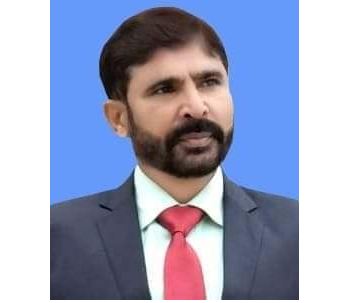Dr. Muhammad Akram Zaheer
Democratic erosion has emerged as a significant phenomenon in the global political landscape, marked by a steady departure from democratic norms and practices. Unlike abrupt breakdowns such as coups or revolutions, this process unfolds gradually through actions often initiated by legally elected officials. These individuals, referred to as agents of erosion, exploit legal frameworks to systematically dismantle democratic institutions. Their actions are frequently cloaked in justifications that appeal to public interest, creating the illusion of democratic legitimacy.The author highlights key conceptual challenges in understanding democratic erosion, particularly distinguishing it from related phenomena such as loss of democratic quality and autocratization. While the former refers to a decline in the effectiveness of democratic systems, the latter represents a more profound shift toward authoritarianism. A nuanced understanding of these distinctions is crucial for analyzing the pathways through which democracies regress.Democratic erosion is characterized by its incremental nature. This gradualism distinguishes it from more overt forms of democratic collapse. Each step in the process may appear minor and legally defensible, making it difficult to detect the cumulative impact. Over time, however, the erosion transforms the political landscape, often leaving behind only the facade of democracy.The study identifies two critical elements in the process of erosion: agency and sequencing. Agency refers to the role of political actors who deliberately initiate and sustain the erosion of democratic norms. Sequencing, on the other hand, examines the chronological and causal progression of events that lead to the deterioration of democracy. These elements are interdependent, as the intentions and strategies of agents shape the sequence of erosion.Agents of democratic erosion, typically incumbents, leverage their positions of power to alter democratic rules. They often use legal mechanisms such as constitutional reforms or new legislation to consolidate authority. These agents justify their actions as necessary for addressing economic, social, or political challenges, thus gaining public support. The legitimacy derived from elections enables them to claim a mandate for their transformative agendas.A distinctive feature of these agents is their lack of normative commitment to democratic principles. While some leaders openly advocate for alternative models of governance, others maintain a rhetorical commitment to democracy while systematically undermining its foundations. Their actions often include curtailing the independence of the judiciary, weakening opposition parties, and restricting civil liberties.
The process of democratic erosion typically begins with the election of an agent committed to altering the political system. Even before assuming office, these individuals often articulate ambitious reform agendas designed to mobilize public support. Upon gaining power, they initiate structural changes to weaken institutional checks and balances, concentrating authority in the executive branch.The subsequent stages involve reconfiguring the political system to entrench their power. This may include extending term limits, manipulating electoral laws, and reshaping the media landscape. These measures not only secure the incumbent’s position but also create systemic barriers to future democratic restoration. The erosion process is often marked by the subtle and legalistic implementation of changes, minimizing public resistance.The final stage of erosion is characterized by the suppression of political rights and freedoms. Media outlets, civil society organizations, and opposition groups become targets of control and repression. Governments may employ a combination of legal measures, such as anti-disinformation laws, and extralegal tactics to silence dissent. While these actions might appear sporadic, they collectively undermine the democratic fabric of the state.A significant challenge in addressing democratic erosion lies in identifying its early stages. The gradual nature of the process makes it difficult to distinguish between legitimate policy changes and deliberate attempts to subvert democracy. Moreover, the interplay between domestic and international factors adds complexity to the analysis. For instance, the rise of autocratic powers globally has emboldened erosion agents, creating a permissive environment for their actions.The implications of democratic erosion extend beyond national borders. As more countries experience erosion, the global balance between democracies and autocracies shifts. This trend poses challenges to the liberal international order, as eroding democracies often adopt counter-hegemonic strategies. Furthermore, the weakening of democratic institutions in influential states can have cascading effects, inspiring similar processes in other regions. Additionally, the role of international actors in countering democratic erosion warrants attention. While global organizations and alliances have historically promoted democratic values, their effectiveness in addressing erosion remains inconsistent. A coordinated approach involving both domestic and international stakeholders is essential for preserving democratic systems.












